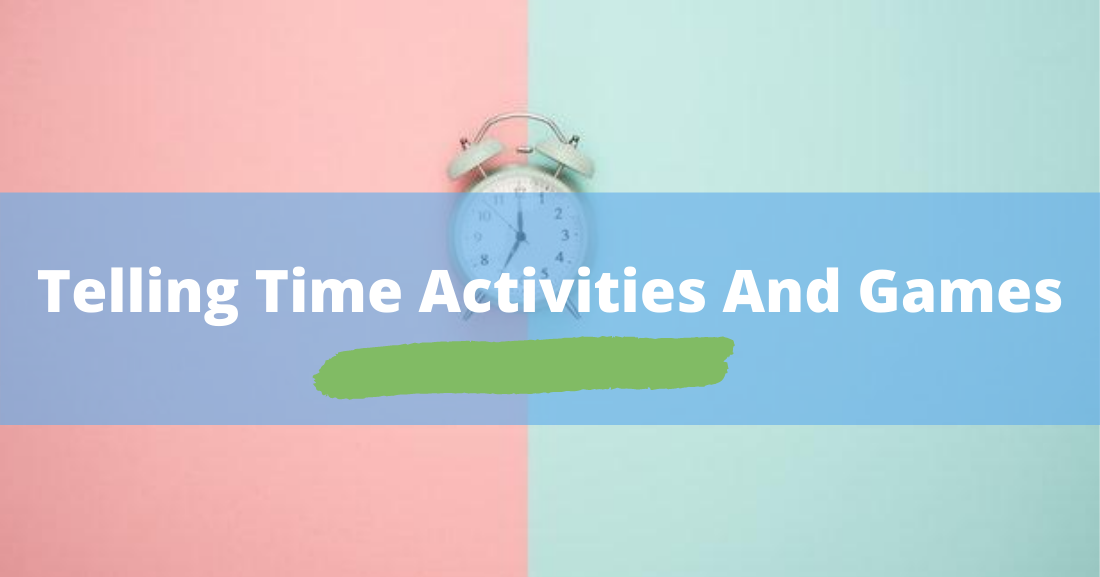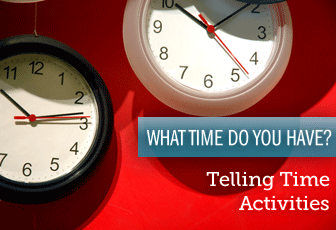How To Teach Time: Telling Time Activities And Games


I find that the more hands-on you can be with telling time, the faster the students will master it. These activities will give you a collection of tools to approach telling time for adults and children.
A fun way to introduce telling time is to simply ask students, “What time is it?” You’ll be amazed at all the glazed looks you may get and the unique attempts to answer correctly! It is good to let them try and some of them may already know the basics. You can then tell them what time it is and then jump right in. There are a lot of details and variables to telling time correctly. You need to teach vocabulary which include: o’clock, a.m., p.m., quarter after, quarter till compared to :45, 6:30 compared to half past 6.
To practice all of the above the best way to start out is with a blank clock drawn on the board with no numbers. Have the students help you fill it in. Go through which numbers are after the hour and which are before, and how those are expressed.
Then draw the two hands and explain that one hand is for hours and one is for minutes. You can do a lot of practice just with drawing different times on the board. What could be a drill can be made a lot more amusing by getting students up to the board to draw in the hands for different times. You can also create handouts that they can then use for pair activities or homework (you can also find a lot of ready-made worksheets in BusyTeacher’s ‘Telling Time’ section).
One of the best ways to practice telling time is to associate time with things you do at that time of day. You can do it with worksheets, cards, or even on the board. Explain morning, afternoon, and evening and what the cutoffs are for each. Here are some points to explain:
These provide good guidelines to then lead into the questions
What time do you _________? and When do you _____________ ?
Assigning activities to times of day as well as a specific time will ensure that they understand the entire concept of time. There are lots of ways to practice this like simple question and answer. For example: What time do you brush your teeth/wake up/eat dinner/have English class. Have students come up with their own ideas and take the opportunity to teach and use new vocabulary.
Being able to use real clocks that the students can manipulate will make for hours of enjoyment and good solid review. It’s a good idea to have at least three to four wall clocks for this purpose. You can make good use of them in several ways. Young learners especially love manipulating the clocks, playing teacher and doing Q and A with the clocks. Adults also enjoy the hands-on activities using the clocks and it really does make the lessons very memorable. You can have students play a variety of games and adapt them for difficulty. You could have a student mark a time on the clock and not show anyone. The group then has to ask questions to deduct what time is on the clock. Or you could have them do races—shout out a time and see who can put the accurate time on the clock the fastest. Really your options are endless when you have a few old wall clocks at your disposal.
There are lots of variable ways to ask and answer questions regarding time. Give them lots of options and provide lots of examples. Some of those are:
It’s good to encourage them to practice it with their friends or even ask strangers what time it is. It is empowering for the students and you can generate many different ways to reuse these activities time and time again.